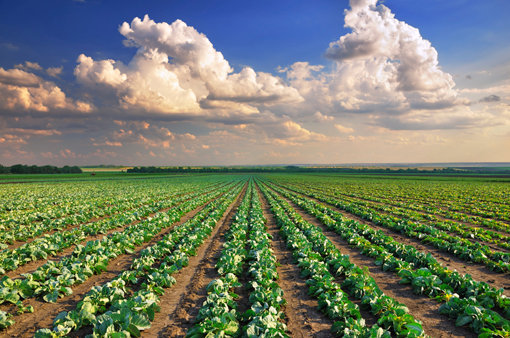| Why fertilizer? More people, more food. Every day the products we supply nourish crops, around the world. We provide a range of phosphate, potash, nitrogen-based fertilizers and innovative tools that increase farmer profitability. Crops need nutrients and minerals to thrive and produce high yields for our costumers. There are three main nutritional requirements: nitrogen, phosphate and potassium which we can blend to a best of breed fertilizer.Soil TextureThe four main soil texture classifications are sand, clay, silt and loam. “Texture” refers to the size of individual soil particles, which is determined by the amounts of sand, silt, clay and organic material found in the soil. Texture is important because it determines the nutrient- and moisture-holding capacity of the soil. Sand is easy to work with and warms up quickly in the spring, but it has a low nutrient- and moisture-holding capacity. It drains well but also gives up water and nutrients very easily. Clay has a high nutrient- and moisture-holding capacity, but drains poorly so plants are left with too much water and no oxygen. Silt is intermediate to sand and clay. Loam is a combination of sand, clay and silt particles. It is considered the best type of soil for gardening because it holds nutrients and moisture well, but also drains well so plants get lots of oxygen. You can determine what kind of soil you have by having a soil laboratory test it, or with a simple ribbon method. Just take a small handful of sand and add water until you can make a moist ball in your hand. Next, stretch the soil between your thumb and forefinger to try and make a ribbon. Whether or not you can do this will indicate what kind of soil you have. Fertilizing ingredients and services Plant Nutrients There are 17 essential nutrients that plants need: carbon, hydrogen, oxygen, nitrogen, phosphorus, potassium, calcium, magnesium, sulfur, iron, copper, manganese, zinc, boron, molybdenum, chlorine and copper. Carbon, hydrogen and oxygen are used in a process called photosynthesis, which converts the sun’s energy into sugars that the plant uses as food. Boron, copper, iron, chlorine, manganese, molybdenum and zinc are known as micronutrients and are needed by plants only in small amounts. All of these nutrients are dissolved in water and absorbed by the plant’s roots. There aren’t always enough nutrients so we add fertilizers to add these missing nutrients to the soil. Soil pH Soil pH can be broken down into a scale:
A pH range of 6.0-7.0 is desirable because most plant nutrients are readily available in this range but sometimes you end up with a pH that is too low or too high. Soils with a pH below 5.5 are considered low. This type of soil may not have calcium, magnesium or phosphorus readily available to your plants. To correct a low pH, lime the soil. Liming is a process that involves adding finely ground limestone to your soil to increase the soil’s pH. First, you need to have a soil-testing laboratory assess your soil to determine how much limestone you will need to apply. The proper grade of limestone can be purchased at most garden centers. A soil pH of 7.8 or more is considered high. This soil may have a low availability of phosphorus. Sulfur and aluminum compounds are usually added to reduce the pH. Consult your local soil-testing laboratory for proper application amounts. Nourishing people, animals and crops |

